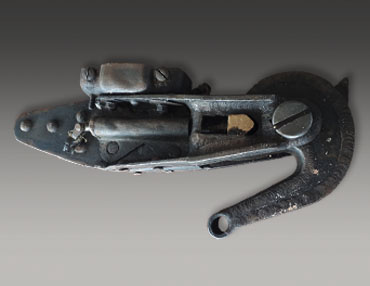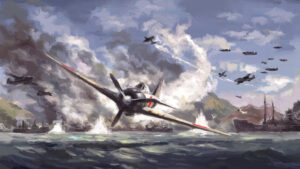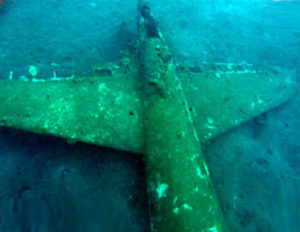
Mitsubishi A6M3 Zero Tail Hook
Rabaul Harbor, Papua New Guinea
Mid-1943.
The Mitsubishi A6M Zero-sen was Japan’s premier fighter in World War II. It was the best all round carrier based fighter in the world, combining long range, maneuverability and powerful armament. However, as the war progressed, newer fighters were able to best the Zero. From China, Australia and Pearl Harbor to the Kamikaze squadrons and Homeland Defense, the Zero was a formidable foe.

In August of 1942, a group of Zeroes were delivered to Rabaul in Papua New Guinea for the newly-arrived Tainan Kokutai. Members of this group included aces Saburo Sakai and Tadashi Nakajima.
The Tainan Kokutai’s move to Rabaul included adopting a newer version of the Zero. The A6M3 type 32 had a larger engine and clipped wingtips, but regrettably a shorter flying range. Only 384 A6M3s were produced, with the entire run being used as land based fighters from Rabaul and Lae. Many were lost due to running out of fuel rather than enemy action.

One Zero, serial number 3013 arrived at Rabaul in mid-1942. Prior to any identification being applied to the tail, the aircraft was involved in enemy action as it left Rabaul base. The plane was severely damaged on it port side near the cockpit. It apparently inverted and crashed in Rabaul harbor, landing upside down on the sea floor in 30 feet of water.
There the aircraft lay undisturbed until it was discovered with a side mounted sonar device by Rod Pearce in late 2010. Volcanic sands from eruptions of Rabaul volcano in 1994 helped protect the aircraft surfaces and paint.
On one dive, well-known wreck-diver Rod Pearce removed from the Zero the tail hook assembly. It is this artifact that Mr. Pearce generously donated to the museum in 2019.